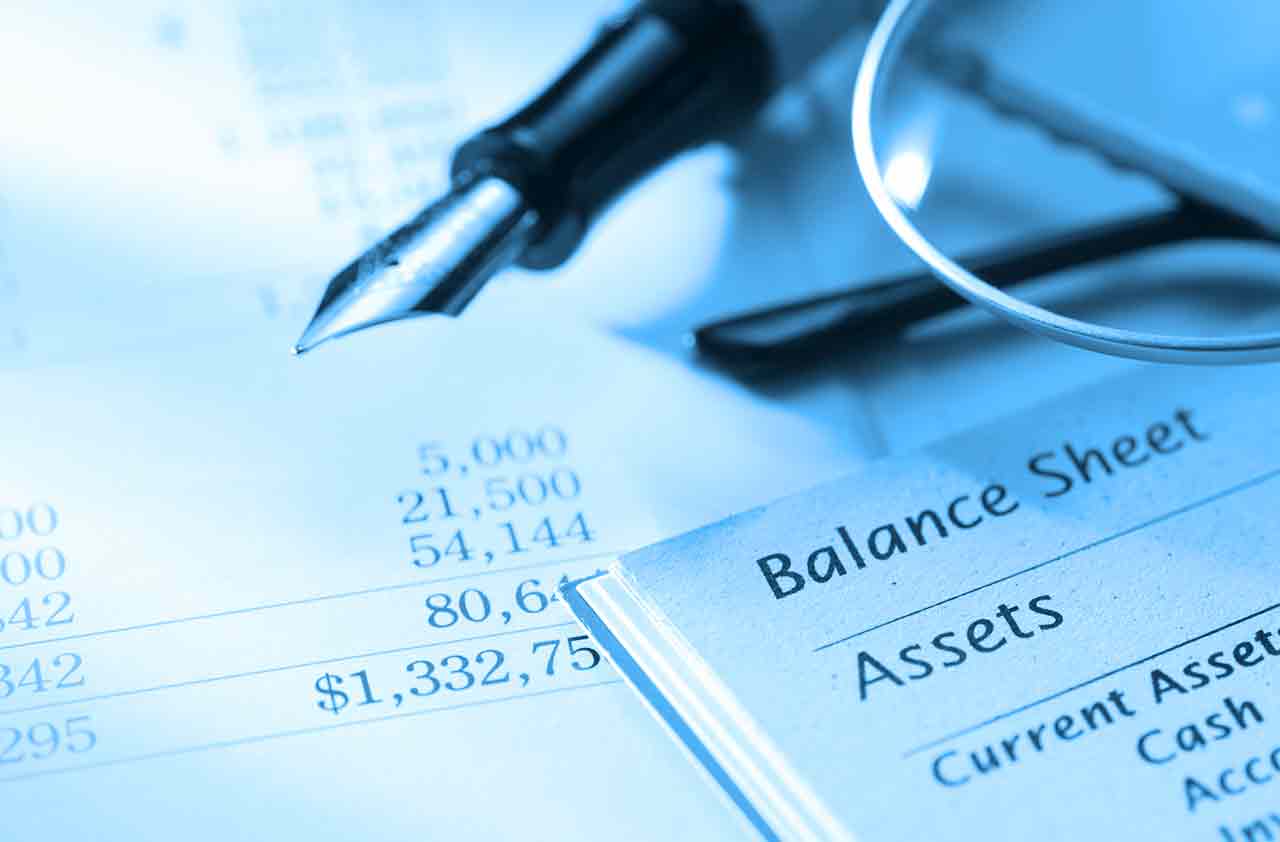Investing in Stocks? Balance Sheets Are Everything
A firm financial footing is essential for any prospective investment, especially in the midst of a crisis


Most successful investors agree with the notion that in crises, cash is king. That's especially true in a crisis that leads to entire industries shutting down for an uncertain period of time, depriving corporations of all of their revenue in some cases. Having a strong balance sheet can be the difference between weathering the storm and going out of business.
That's true even considering the massive interventions by global governments and central banks. It's no surprise that high-yield corporate bonds are struggling. The companies they finance had exhibited risk to their interest-paying ability long before this existential crisis hit. Should the COVID-19 crisis last longer than the optimistic assumptions, a lot of companies simply won't make it.
In this environment, it's natural to look for blue chips with the strongest balance sheets. While stable financials alone don't guarantee outstanding returns, in times of uncertainty, being able to determine which companies are soundly built is essential for anyone investing in stocks.

Sign up for Kiplinger’s Free E-Newsletters
Profit and prosper with the best of expert advice on investing, taxes, retirement, personal finance and more - straight to your e-mail.
Profit and prosper with the best of expert advice - straight to your e-mail.
But which balance sheet factors should you consider? There are many traditional indicators when it comes to gauging financial stability, but while some of those will likely prove useful even under today's extraordinary circumstances, others could lead to grave mistakes.
First, Don't Ignore Broader Trends
Starting with balance sheet analysis is usually how some "bottom-up" analysis methods begin, which means these measures don't take industry- or sector-wide trends into account.
But the current crisis also makes sector- and industry-level analysis important, if not downright necessary.
The time frame of your investment style will be crucial in deciding which sectors you choose, because even the most-affected sectors will recover. We need operational airlines. The oil industry might look different because of the current supply/demand shock, but it's not going away. Tourists will return to hotels. Targeted government interventions will help the hardest-hit industries, though a prolonged crisis still could wipe out the equity of some companies.
While timing might be very tricky here, one thing seems likely: The most financially stable companies are the most likely to hold up and flourish following the crisis. They might even increase their market share during the crisis and subsequent recovery. That's because they might eat up share of folded competitors, and in some cases, they'll be able to aggressively gobble up underpriced assets, including other companies.
That's why balance sheets matter – especially in the case of currently struggling sectors and industries.
What Makes a Strong Balance Sheet?
Now, we'll look at some of the most traditional measures used to evaluate the balance sheets of non-financial firms. (Gauging the exposure of most financial firms, especially mid- and large-cap banks, is close to impossible here, even in the wake of the Fed's unlimited quantitative easing program and the largest stimulus package in U.S. history.)
- Cash ratio (cash/current liabilities): "Cash" here includes both actual cash and short-term investments in highly liquid securities. The ratio measures a company's ability to pay its liabilities due during the next 12 months. Ideally, you want a ratio of greater than 1 (which means cash is greater than liabilities), but industry conditions might justify a ratio of 5 or higher.
- Current ratio (current assets/current liabilities): The current ratio is like the cash ratio, but more forgiving since it includes other short term assets that could be liquidated such as inventory or receivables. Current ratio has more components in the numerator, so it should be lower than the cash ratio, but it could still be above 1 and considered safe.
- Quick ratio (cash + marketable securities + accounts receivables/current liabilities): The quick ratio does not contain inventory, while the current ratio does because it includes all “current assets.” Since the current ratio contains more assets to liquidate, it provides a more optimistic view of liquidity than the quick ratio. Quick ratio should be lower than the current ratio, and is fine in low single digits, but 5 or more might cause apprehension.
- Long-term debt-to-equity ratio (long-term debt/shareholder equity). This ratio shows the likelihood of a company's ability to pay its long-term bonds, but not other liabilities such as accounts payable and as shows bond investors the likelihood of a default on their loan. You want shareholders to have more money in the company than lenders (a ratio of less than 1); a multiple of 2 or 3, while not unconventional, might cause jitters in the current environment.
Other Financial Metrics to Consider
Profitability ratios might seem out of place in a balance sheet analysis, but the two are inextricably linked. For instance, the return on equity requires input from the balance sheet and income statement. Further, a company's net profits get added to the shareholder equity account annually. So, money-making companies are building equity, and money-losing companies are drawing down equity, which influences a whole host of other ratios.
Rather than committing yourself to a full-throated earnings analysis every time, here are three fundamental blended ratios to consider:
- Return on equity (net income/shareholder equity): Demonstrates the amount of profit earned on the capital committed by shareholders. This requires a close look because a lower ROE can indicate lots of equity, hence stability, but also substandard profits. A "good" ROE varies by industry and capital structure. But given pre-crisis dividend and bond yields, it would be difficult to marshal enthusiasm for an ROE of less than 8%.
- Long-term earnings growth: Often measured as the average rate of growth over a period of time and can show longer-term earnings trend masked by short term variation. Likewise, looking at a shorter period of growth can uncover variance in growth masked by the long-term trend. Growth rates are highly idiosyncratic (e.g., tech is high and automaking is low), so earnings growth should be valued against industry competitors. But in general, higher is better.
- Earnings volatility: Measures the amount by which earnings vary from an average rate. The greater the variance, the more risk. If earnings can swing more than 15% or more, some investors might recoil.
A smart way to get a bead on the health of a company's balance sheet is to see what other investors think about it. Bond investors are some to the smartest investors on Wall Street, and their opinion about what a loan (i.e., bond) is worth – which is manifest in the yields on bonds – says a lot about the company's balance sheet and future prospects.
- Corporate bond yields: Bond yields reflect investor sentiment regarding the probability of default. A higher yield reflects the collective opinion that the company may have difficulty maintaining the cashflow to support interest payments. For instance, a $1,000 bond trading at $850, which will produce a higher yield, is a warning sign. It shows investors need to be tempted with a higher yield to match the greater risk. Interest-rate moves cause bond values to vary, so investors should watch out for yields that go above the rates that interest movements dictate.
- Credit default swap prices: These instruments act as insurance to bond investors in the event of a default. The higher the price for a credit default swap, the higher probability of default. Credit default swaps are an opaque market, but a good rule is, the higher the price to insure an event, the greater the likelihood that event will materialize.
What Do You Do From Here?
Balance sheets and other metrics of risk clearly are not the only things that matter in this environment. You should apply everything above to the real-life scenarios playing out in front of you. For instance, right now, you should be considering company-specific risk to the coronavirus for every prospective stock you evaluate.
But in the coming weeks and months, it's perhaps more important than ever to evaluate balance sheets – of everything you currently own, as well as any prospective stocks that suddenly look attractive to you.
Remember, companies with strong balance sheets can:
- Weather storms for longer than those without
- Continue to pay their dividend
- Capitalize on the new opportunities that disruption inevitably creates
Understanding what the balance sheet says about their strengths and weaknesses can be enormously rewarding in terms of building – and preserving – your capital.
Get Kiplinger Today newsletter — free
Profit and prosper with the best of Kiplinger's advice on investing, taxes, retirement, personal finance and much more. Delivered daily. Enter your email in the box and click Sign Me Up.

-
 Stock Market Today: Stocks Gain on Tech, Auto Tariff Talk
Stock Market Today: Stocks Gain on Tech, Auto Tariff TalkThe Trump administration said late Friday that it will temporarily halt tariffs on some Chinese tech imports.
By Karee Venema
-
 Sam's Club Plans Aggressive Expansion: Discover Its New Locations
Sam's Club Plans Aggressive Expansion: Discover Its New LocationsSam's Club expansion plans will open up to 15 new stores each year. Learn where they plan to open in 2025.
By Sean Jackson
-
 CPI Report Puts the Kibosh on Rate Cuts: What the Experts Are Saying About Inflation
CPI Report Puts the Kibosh on Rate Cuts: What the Experts Are Saying About InflationCPI Consumer price inflation reared its ugly head to start the year, dashing hopes for the Fed to lower borrowing costs anytime soon.
By Dan Burrows
-
 Fed Leaves Rates Unchanged: What the Experts Are Saying
Fed Leaves Rates Unchanged: What the Experts Are SayingFederal Reserve As widely expected, the Federal Open Market Committee took a 'wait-and-see' approach toward borrowing costs.
By Dan Burrows
-
 CPI Report Keeps the Fed on Track: What the Experts Are Saying About Inflation
CPI Report Keeps the Fed on Track: What the Experts Are Saying About InflationCPI Disinflation in key areas of consumer prices should help the Federal Reserve stick to its policy path of gradual cuts to interest rates.
By Dan Burrows
-
 Blowout December Jobs Report Puts Rate Cuts on Ice: What the Experts Are Saying
Blowout December Jobs Report Puts Rate Cuts on Ice: What the Experts Are SayingJobs Report The strongest surge in hiring since March keeps the Fed on hold for now.
By Dan Burrows
-
 Fed Sees Fewer Rate Cuts in 2025: What the Experts Are Saying
Fed Sees Fewer Rate Cuts in 2025: What the Experts Are SayingFederal Reserve The Federal Reserve cut interest rates as expected, but the future path of borrowing costs became more opaque.
By Dan Burrows
-
 CPI Report Casts Doubt on Rate Cuts in 2025: What the Experts Are Saying About Inflation
CPI Report Casts Doubt on Rate Cuts in 2025: What the Experts Are Saying About InflationCPI November Consumer Price Index data sealed the deal for a December rate cut, but the outlook for next year is less certain.
By Dan Burrows
-
 Rebound in Jobs Growth Keeps Fed on Track: What the Experts Are Saying
Rebound in Jobs Growth Keeps Fed on Track: What the Experts Are SayingJobs Report No nasty surprises in the November payrolls data leaves a quarter-point cut in play.
By Dan Burrows
-
 October CPI Report Hits the Mark: What the Experts Are Saying About Inflation
October CPI Report Hits the Mark: What the Experts Are Saying About InflationCPI While the current pace of rising prices appears to have leveled off, the expected path of rate cuts has become less certain.
By Dan Burrows